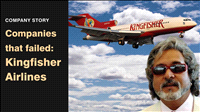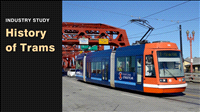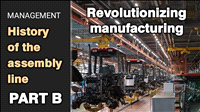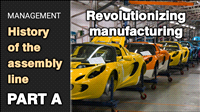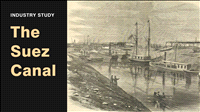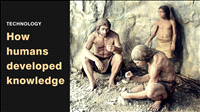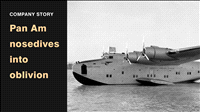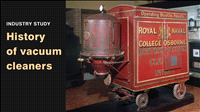History of Trams | Industry study | Business History
By Kiron Kasbekar | 31 Oct 2023
Hi, everyone! Welcome to the Business History Channel!
I am Kiron Kasbekar, and today’s video is about the history of trams, those city vehicles that were powered by electricity and ran on rails, cutting through the other traffic on the roads.
You might wonder why I have chosen to discuss the topic of trams today. Those big hunks of metal clanking along on sunken rails in the middle of the street. Many of you may not have seen them.
So am I talking about trams today merely because they have an interesting history? That, of course, they do. But in the case of trams, there is one other reason. A very important one.
Trams are beginning to become relevant in today’s world too. That’s because trams do not pollute the air like petrol and diesel-driven vehicles do.
But we’ll come to today’s world in a bit later in this video. Let me first talk about the history of trams.
So let us begin from the beginning of urban transport.
Now can you imagine a horse-drawn car? I know, I know. Stupid idea. You are going to say, what!? A Honda, Suzuki, Mercedes Benz or Volvo being pulled by horses? That’s funny, and that didn’t ever happen.
What did happen was that there were horse-drawn carts and coaches in most countries in the world. Private and public. Rich families had their own horse-drawn coaches. Others could hire them like we hire taxis today.
Now can you imagine a horse-drawn tram, with the tram wheels running on sunken rails? If you think that is another laughable fantasy, think again. For there were, in fact, horse-drawn trams in many cities in the world, until they were re-engineered to run with steam power first, and then with electric power.
Steam-powered passenger vehicles running on city roads? That’s another strange image, isn’t it? But these vehicles were a reality for some time in the past, between horse-drawn vehicles and electric vehicles, or, a bit later, petrol or diesel-driven ones.
If you have lived in Kolkata (i.e., Calcutta), in India, or visited that city, then you know what a tram is. Or if you have lived in or visited San Francisco in America – or, for that matter, in one of many cities in Europe, Asia and Africa – then you know what a tram is.
Right! The vehicle that runs on rails, like a train, but whose tracks may crisscross areas inside a city’s different zones. And whose rails may be crossed by people and motor-driven vehicles alike at nearly any point along the line. Not what you get with railway trains.
Today’s video is about trams, which were used all over the world, and then went out of use in most cities.
Did you know trams ran in many Indian cities in the past? Including not just Bombay and Calcutta, but also Madras (Chennai today), Delhi, Nashik, Kanpur, Patna, Cochin and Bhavnagar? Until they were closed down.
But, wait. They are making a comeback in some cities. And that comeback is most interesting as it is important for our environment.
I mentioned Kolkata and San Francisco earlier as cities that have had trams for a very long time. But I also lived for many years in Bombay, now Mumbai, and used trams to go to school whenever I didn’t feel like using the school bus. Sometimes I missed the school bus because I preferred to spend time playing on the school ground.
I had a choice of bus, local train or tram. And a tram was as frequent a choice as a bus. Sitting on the upper deck of a bus used to be nice, for I got a good view of the street scenes below. But the trams were also double-decker. So, little to choose between the two, except the tram was slower but cheaper, and the bus was faster and cost a little more.
Trams were a common feature of big cities around the world. What is different about San Francisco and Kolkata, and some other cities, is that they have continued with trams for close on a century. Even as the number of buses and taxis grew, they continued with trams.
The first tramway to run in any city was a horse-drawn passenger system that opened in Swansea in Wales in 1807. Known as the Swansea and Mumbles Railway, the tram service was a big success. It carried over 400,000 passengers in its first year of operations.
Other horse-drawn tramways soon opened up in other cities around the world, including New York, Boston, and London. The first tram in India was launched in Kolkata in 1874. It was a horse-drawn tram and was operated by the Kolkata Tramways Company.
Around the same time, in 1875, the first steam-powered tram was launched in France, in its capital, Paris. Steam trams were more powerful than horse-drawn trams and could carry more passengers. However, they were also more expensive to operate and maintain.
The first electric tram was launched in Berlin, Germany in 1881. Electric trams were more efficient and reliable than steam trams and quickly became the preferred mode of public transportation in many cities around the world.
The use of trams spread around the world in the late 19th and early 20th centuries. By 1914, there were over 100,000 trams in operation in over 30 countries.
Trams were especially popular in Europe and North America. In Europe, trams were seen as a modern and efficient way to transport people around cities. In North America, trams played a major role in the development of urban areas.
Then trams were withdrawn in a large number of cities in which they earlier operated. In their place came buses and millions of cars. Traffic snarls got worse and worse – from Los Angeles to Mumbai to Shanghai – no major city remained free of the curse of interminable traffic jams and horrendous pollution.
So finally it has dawned on governments that action is needed. Several steps have been taken in the past decade or two. These include the introduction of vehicles powered by compressed natural gas, or CNG, and electric vehicles, and now they are talking of solar-powered vehicles. Simultaneously trams have been reintroduced in some cities around the world.
There are a number of reasons for this.
One reason is that trams are a more sustainable mode of transportation than petrol-driven vehicles. Trams do not produce noxious emissions, and their use instead of the use of vehicles using petroleum-based fuels helps to reduce air pollution and greenhouse gas emissions.
Another reason for the reintroduction of trams is that they are a more efficient way to transport people around cities than cars. Trams can carry more passengers and can move more quickly through traffic.
Among the cities that have re-introduced trams are Melbourne in Australia, Manchester in England, Portland in the US, Bordeaux in France and Istanbul in Turkey.
There are many more cities in the world – on every continent – that have introduced or re-introduced trams and light-rail transit systems, of which trams are a part.
This time, given the rising costs of petroleum-based fuels and concerns about the pollution they cause, it seems electric trams are here to stay. They will have to compete with electric trolleys connected to overhead power supplies or running on batteries – because trolleys have greater freedom to move than trams do.






